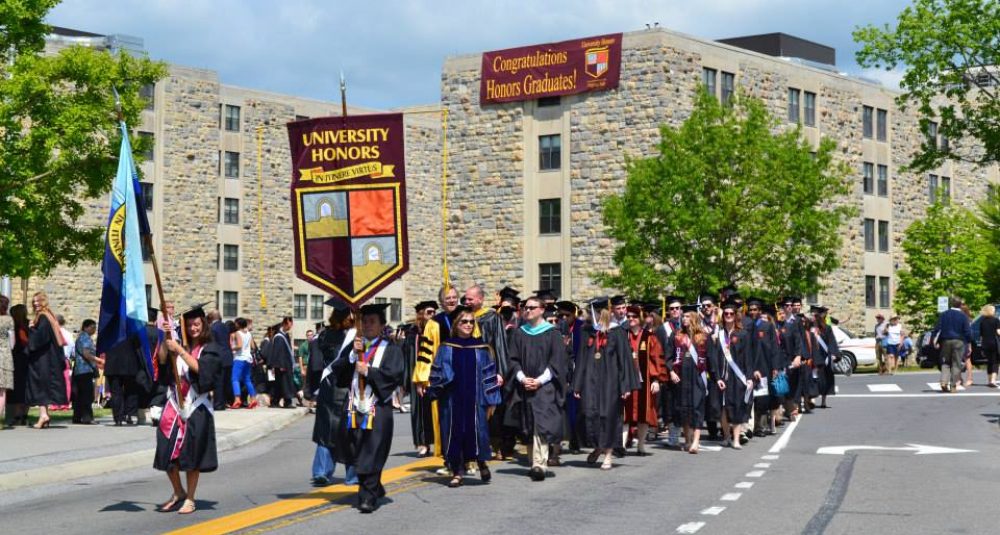In previous posts we have written about the dominance of elite private institutions when it comes to winning prestigious national awards, such as Rhodes, Marshall, Truman, Gates Cambridge, and Goldwater scholarships. There is no question that Harvard, Princeton, Yale, MIT, Stanford, and a few other elite schools dominate some of these awards, especially Rhodes scholarships.
But what about the performance of other leading private universities, including those in the top tier of the U.S. News rankings? We have analyzed the record of 20 private universities ranked 24 to 83 in the 2013 U.S. News rankings. The average ranking for the 20 schools is 54.4. We then compared their performance with that of the 50 universities whose honors programs we evaluated. The average U.S. News ranking of the 50 public schools is 74.16, down from an average of 72.82 in 2012.
The 20 private universities are the following: Notre Dame, USC, Wake Forest, Boston College, NYU, Case Western Reserve, University of Miami, Boston University, George Washington, Tulane, Fordham, Northeastern, SMU, Syracuse, American, Baylor, Denver, Marquette, Tulsa, and TCU.
We analyzed the full history of Rhodes, Truman, Churchill, Fulbright, Goldwater, and Udall awards, and we adjusted for size of undergraduate enrollment in the case of Fulbright Student Scholarships because of the high number of those awards (about 1,500) in a given year. We also analyzed Marshall and Gates Cambridge awards from 2001 through 2012. One point was assigned for each award.
On a scale with 25 being the highest score, the mean score for the private universities was 7.21 and for the public universities it was 11.86. Below are some interesting specifics:
- The University of Tulsa had the highest overall score for the private universities, mainly due to the impressive number of Goldwater awards for undergraduates studying STEM subjects (51), which would place Tulsa at number 9 among all 70 universities in this comparison. The leaders in Goldwater awards (among our 50 public schools) are Illinois (63), Penn State (61), Virginia (59), Wisconsin (56), Arizona State and Minnesota (54), and Michigan and Washington (52).
- Overall, the mean score for Goldwater awards (raw numbers) was more than twice as high for the public universities as it was for the private schools (33.7 versus 16.2).
- The mean score for Rhodes Scholarships was likewise much higher for the public schools, 12.16 versus 5.25.
- Tulane led private schools in total Rhodes Scholarships with 18, followed by Notre Dame (14), Wake Forest (13), Case Western (10), Boston University (8), USC (8), and Denver (7). The leading schools among the 50 we reviewed are Virginia (46), North Carolina (41), Washington (39), Wisconsin (31), Kansas and UT Austin (27), and Michigan (25).
- The four private schools that had a total scaled score that was above the mean for the 50 public schools were Tulsa, Tulane, Notre Dame, and NYU.
- The strongest performance for private schools was in earning Fulbright awards, probably because of the adjustment for size of undergraduate enrollment. The mean score for the private schools was 7.21 versus 3 .07 for the public schools.
- The mean scores for Truman Scholarships were close, with private schools averaging 8.8 and public schools 9.3. American University and Wake Forest led private schools with 15 Truman awards each, followed by USC (14), SMU (13), Boston College and Tulane (12), and Syracuse and Tulsa (11). The leading public schools are North Carolina (32), UT Austin (26), Michigan and Virginia (24), Wisconsin and Arizona State (17), and Arkansas and Delaware (16).
- The public universities in this comparison score significantly higher in earning Gates Cambridge and Marshall scholarships since 2001. However, NYU students have won an impressive 8 Gates Scholarships, the only private university in this comparison to win more than 3. Illinois has 10, Penn State 7, Rutgers and Florida 6 apiece, and Georgia, Georgia Tech, NC State, and Michigan 5 apiece.
- The public universities dominate Udall Scholarships, although American University has 10 and Tulsa 9. Arizona State has 29, Arizona 21, Penn State 20, Kansas 16, and North Carolina 15.

